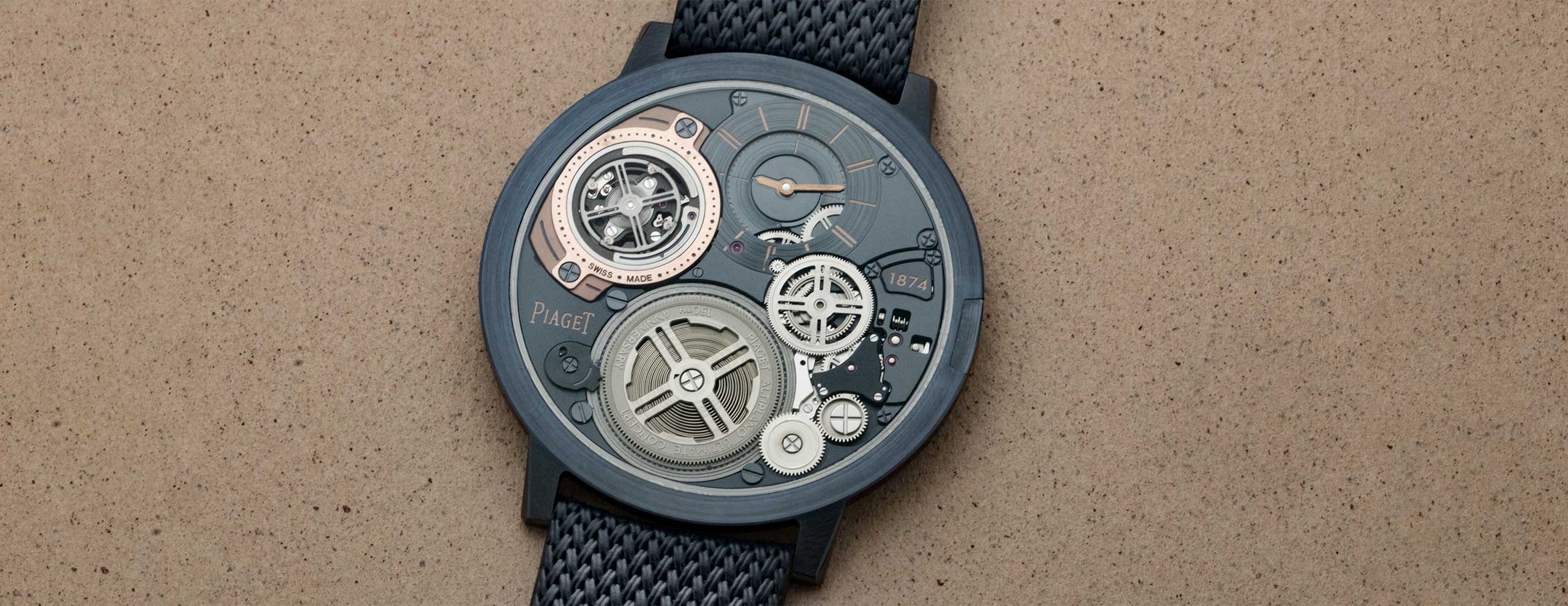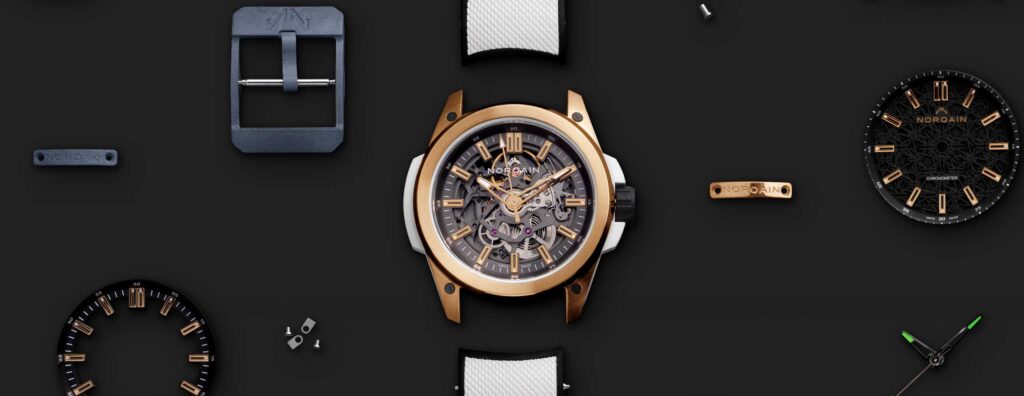The secrets to a thin tourbillon
Records in watchmaking have become something of a moving target; Bulgari has reclaimed the title of the world’s thinnest watch from Richard Mille, only to have Piaget surpass it with the world’s thinnest tourbillon. Launched to mark the 150th anniversary of Piaget, the Altiplano Ultimate Concept Tourbillon breaks the record by a generous margin; it measures just 2mm high, which is identical to the non-tourbillon AUC launched in 2018. But as is often the case, focusing on numbers alone runs the risk of obscuring much of what makes a watch interesting, or thin in this case.
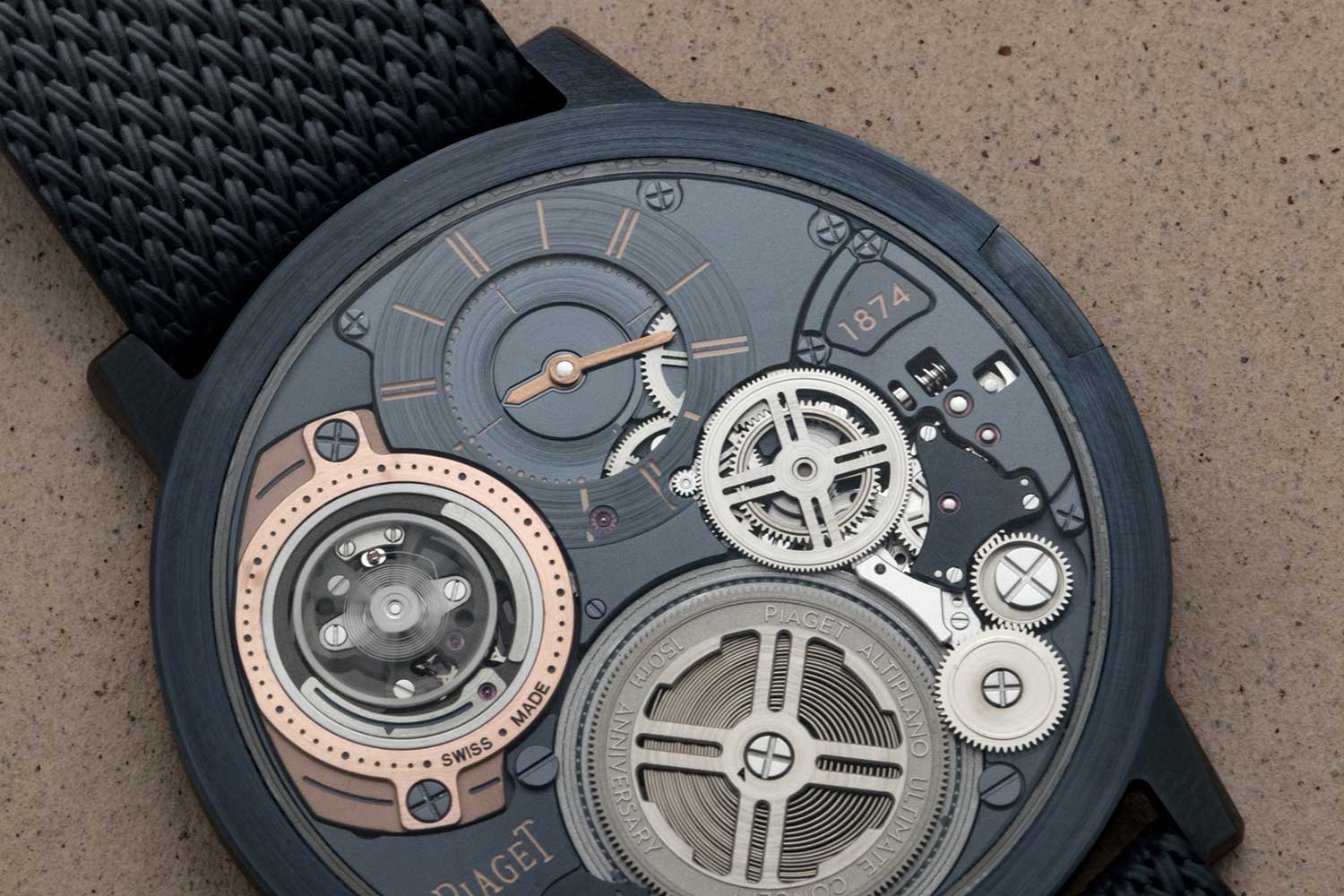
Piaget Altiplano Ultimate Concept Tourbillon (Image: Revolution)
The pursuit of ultra-thin tourbillons is somewhat paradoxical as there is an inherent tension between achieving extreme thinness and maintaining chronometric performance, which requires a certain robustness and space for mechanisms to function optimally. Slimmer profiles inherently limit this capacity; there is no room for overcoils for instance. Hence, it should be evident that exceptionally thin tourbillons are intended as a demonstration of engineering prowess rather than a genuine exercise in precision timekeeping. With that said, tourbillons themselves are a paradox; they address the issue of gravity while simultaneously introducing new challenges such as inertia and friction, essentially hogging space and power that can be better spent on a larger or faster balance wheel. This is all to say that the inclusion of a tourbillon involves a careful balance of dimensions, inertia, and torque, wherein the triumph in the AUC Tourbillon lies. Despite increased spatial and power demands, reported to be 25% higher by the brand, it maintains a height of 2mm and is only marginally wider than the AUC, by a mere 0.5mm.
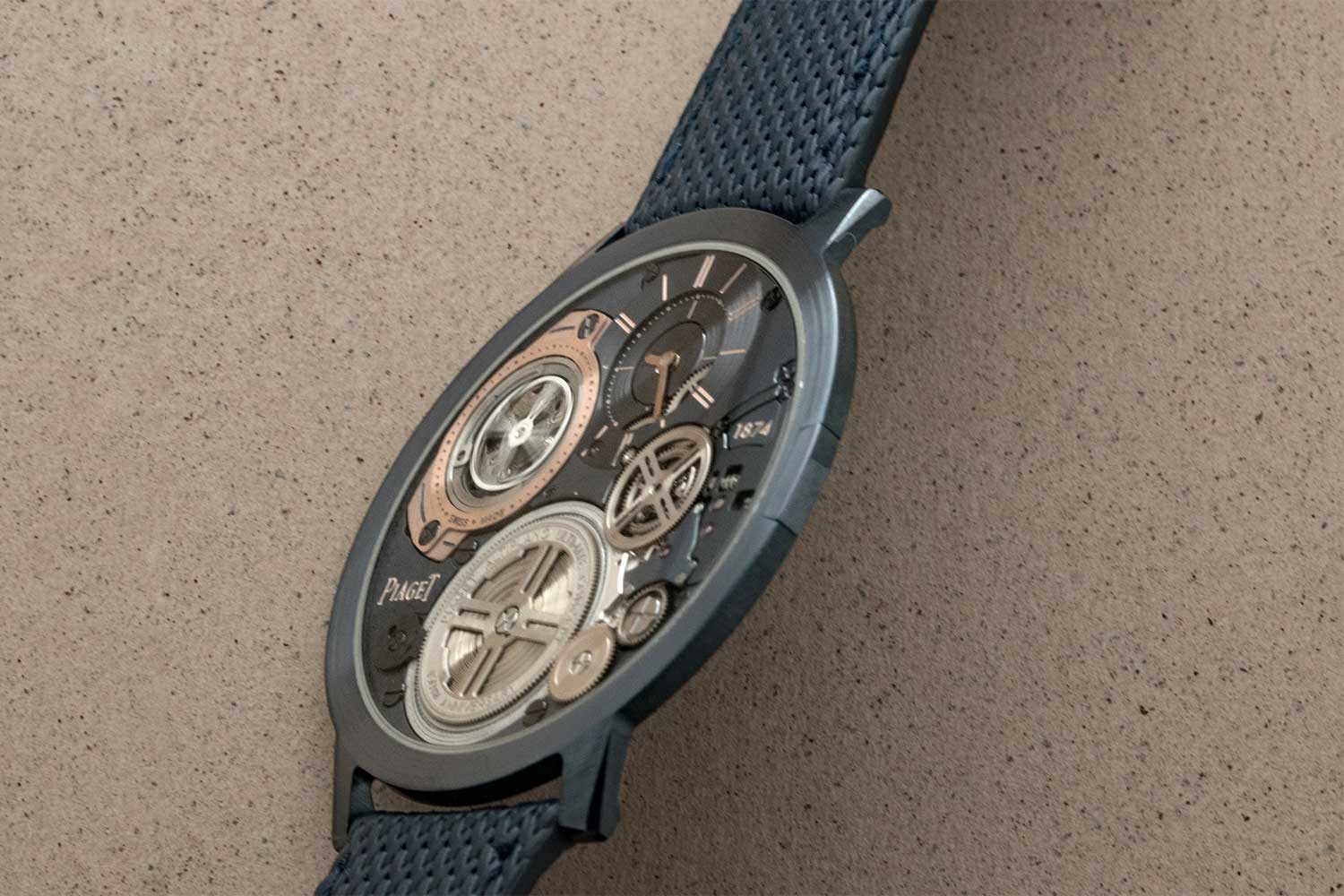
Piaget Altiplano Ultimate Concept Tourbillon (Image: Revolution)
While the calibre 970P-UC in the AUC Tourbillon generally appears to be very similar to the AUC’s calibre 900P-UC in terms of fundamental layout, they are almost entirely different. According to the brand, 90% of the components had to be redesigned.
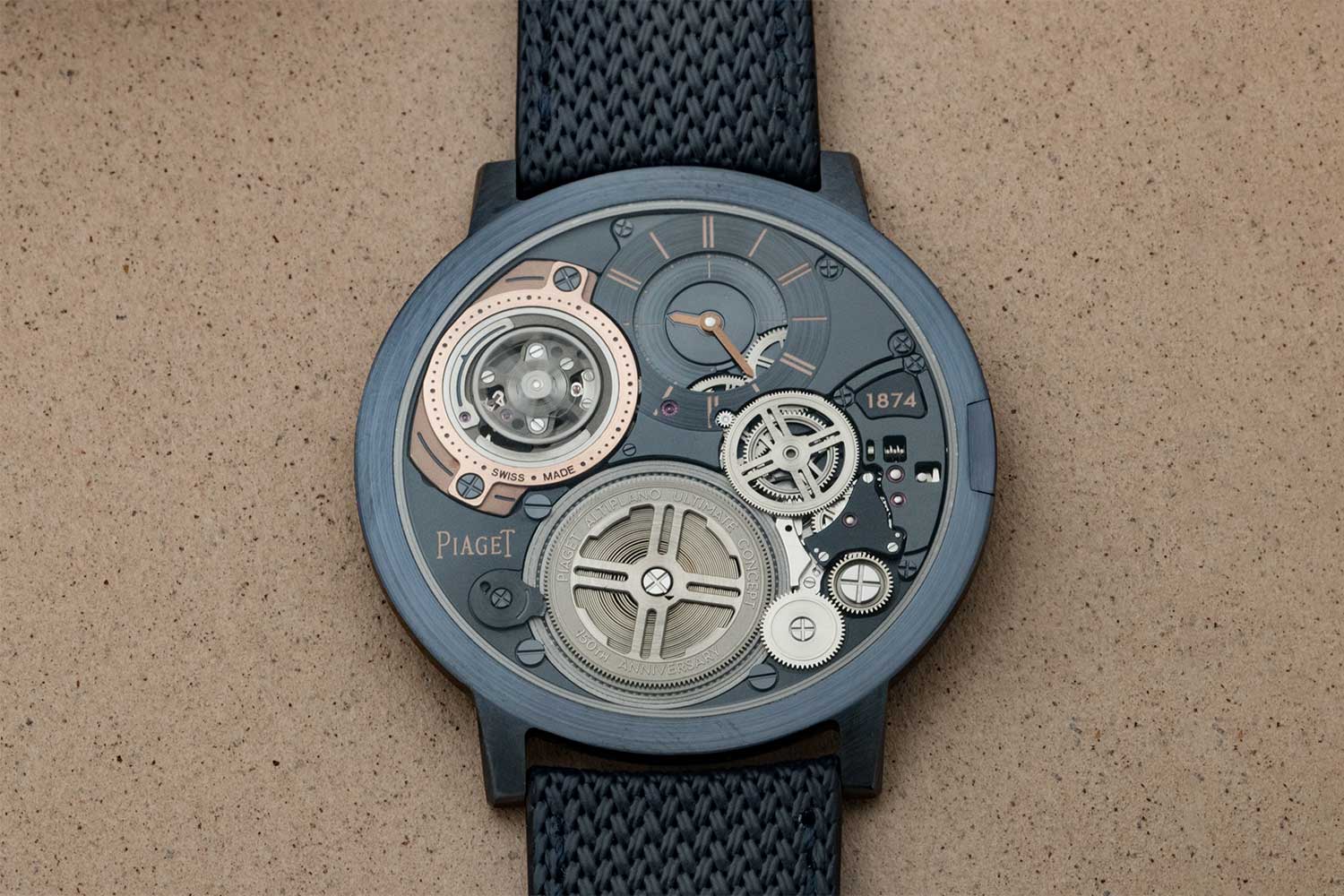
Piaget Altiplano Ultimate Concept Tourbillon (Image: Revolution)
The AUC Tourbillon employs the same overarching strategies as the AUC model, including milling the case back to accommodate moving parts and designing an off-centered dial with the motion works driven by an auxiliary train to maintain a single-plane configuration for all components. These solutions were initially adopted in the Piaget 900P, which, standing at 3.65 mm in height, claimed the title of the thinnest mechanical watch upon its debut in 2013.
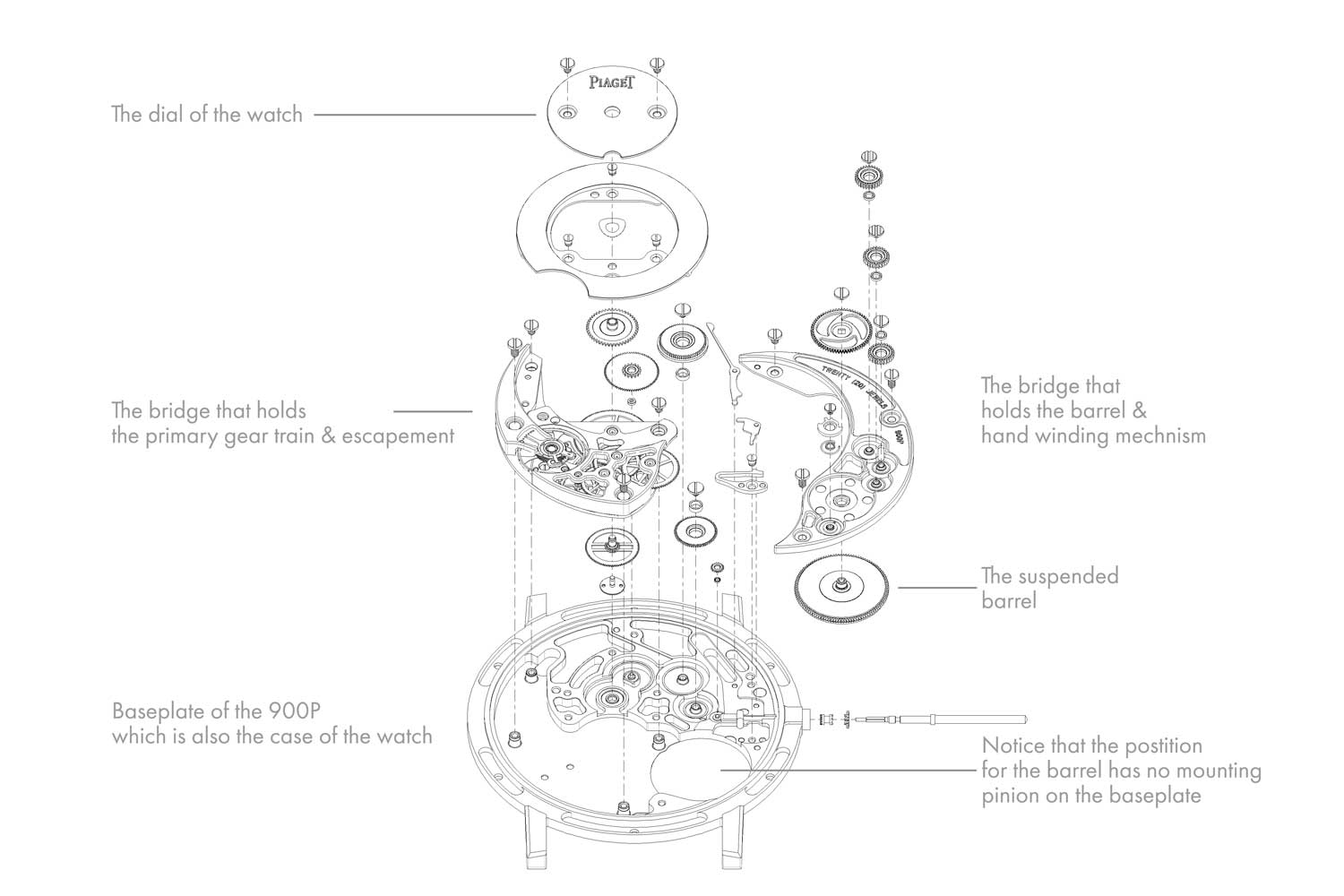
A blown up diagram of the 900P showing how the gear train and other components of the timepiece are built into the caseback, which serves as the movement's baseplate
As a recap, in a conventional central-seconds watch, the fourth and center wheels share the same axis, with the motion works positioned above the latter, driving the hands above the dial in a stacked arrangement. However, when space is at a premium, all three gears as well as the dial must be distributed on the horizontal plane, with the mainspring barrel driving the motion works via an auxiliary train. To further suppress its height, the hour hand is inset on an hour rotating disc, meaning the dial and the hour hand effectively becomes a single unified layer.
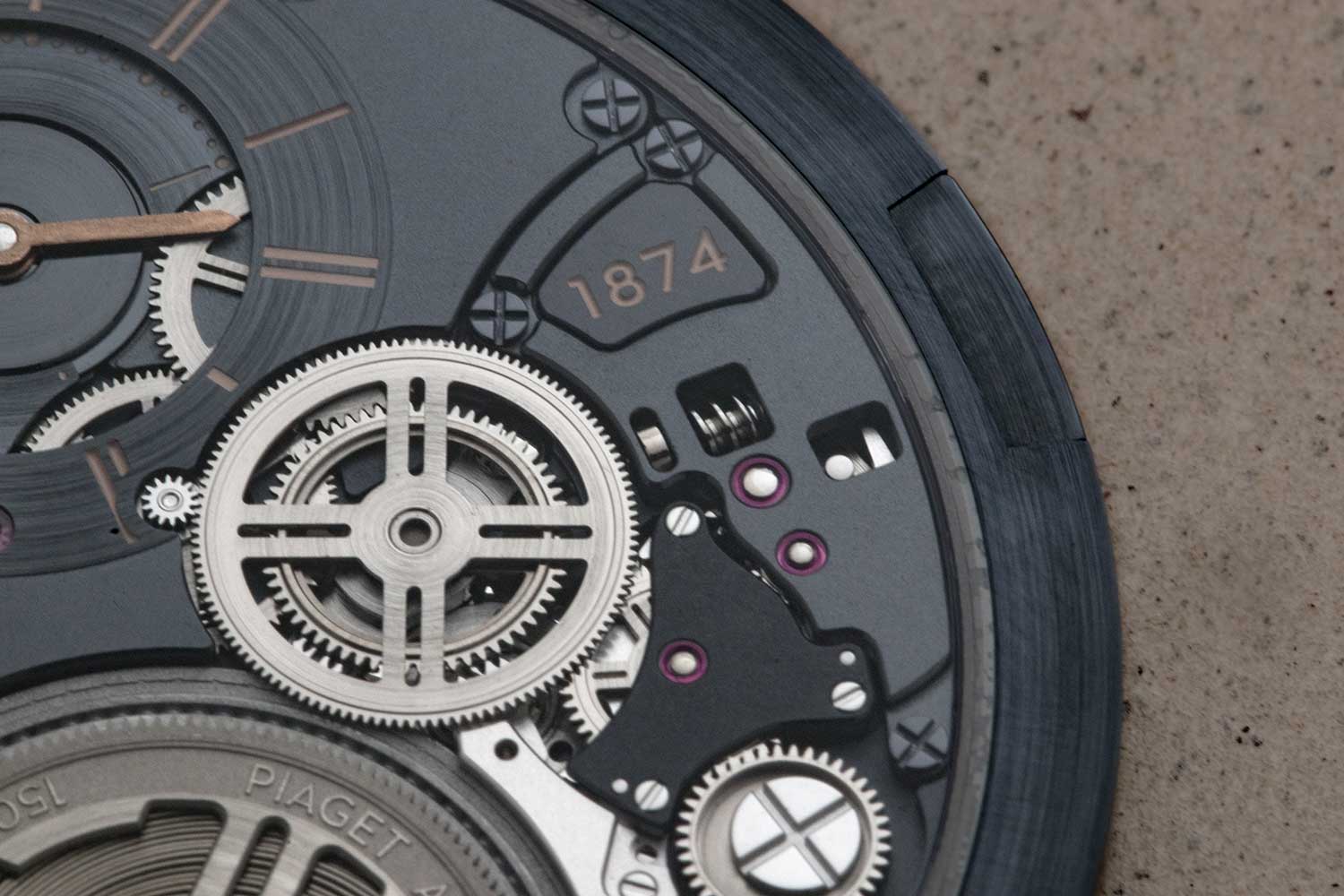
Piaget Altiplano Ultimate Concept Tourbillon (Image: Revolution)
Like the AUC, the case is made of M64BC, a cobalt based alloy, for greater rigidity. This is crucial as it retains the gears and pivots, and at the same time, has a wide diameter of 41.5mm while being wafer-thin, making it prone to slight distortion when worn too tightly.
Even more radical are the keyless works. Traditionally, the keyless works employ a clutch and winding pinion, both directly driven by the winding stem, positioned perpendicular to the dial. In this configuration, the winding pinion engages with the crown wheel, which represents yet an additional layer in the movement. Piaget, however, replaces the winding pinion with a worm gear. Its spiral threads enable it to mesh and drive a gear laterally on the same plane.
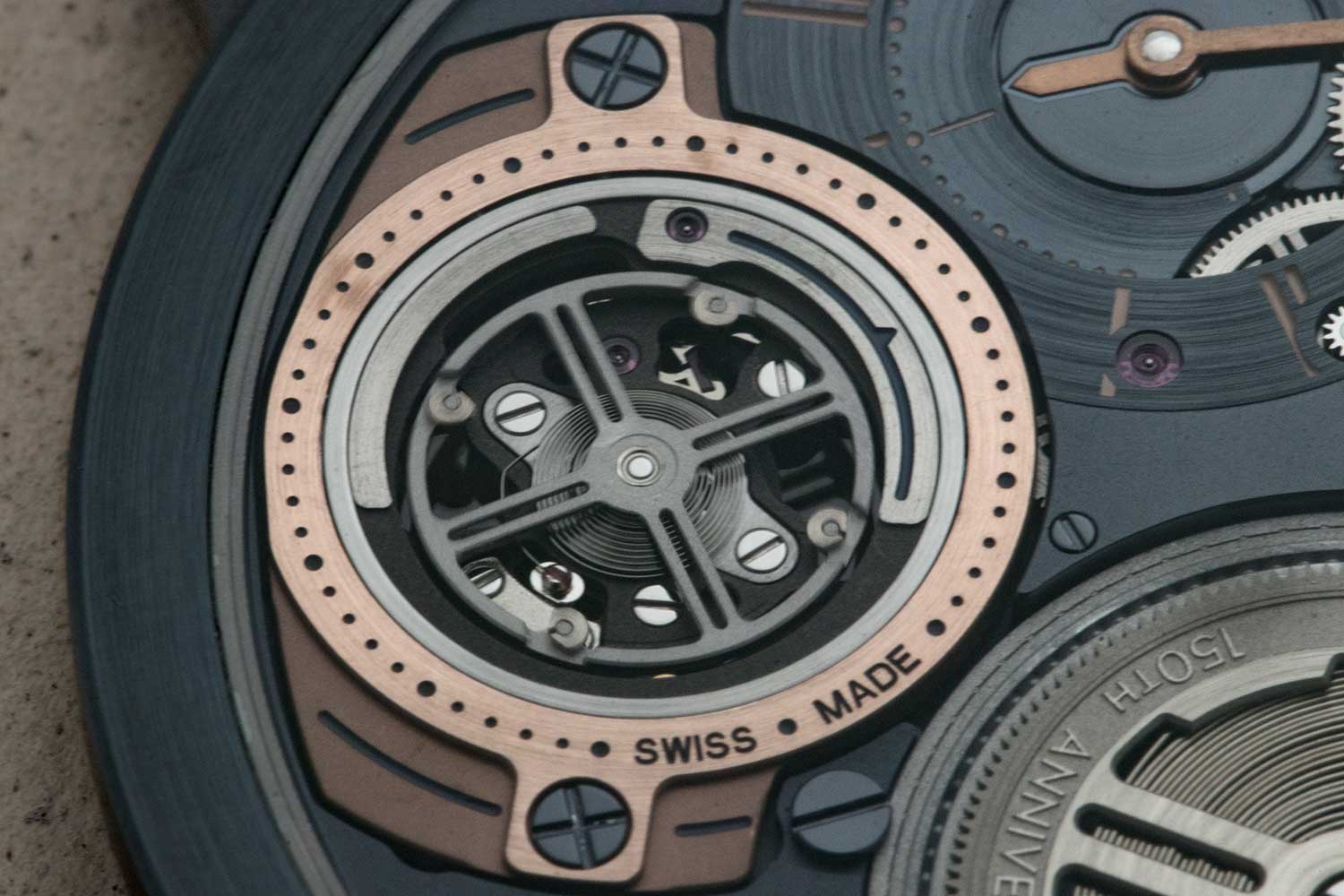
Piaget Altiplano Ultimate Concept Tourbillon (Image: Revolution)
Like the AUC, the mainspring barrel runs on ball bearings, which reduces the thickness required for bridges, traditional pivots and jewels. The barrel cover is also skeletonised to replicate the cross-hair design of the original Altiplano and to reduce inertia. The thickness of the mainspring itself was slightly increased to deliver higher torque while maintaining a power reserve of 40 hours.
Additionally, the sapphire crystals on the front and back were reduced to 0.2mm and 0.16mm respectively. Like the AUC, the crown takes a rectangular form and is seamlessly recessed into the case band. This preserves the symmetry of the case while protecting the crown from impacts. But an inevitable downside is that it requires a motorized tool for both winding and setting due to its size.
Traditionally, a tourbillon is driven by a pinion at the centre of the cage but the AUC relies on peripheral gear system. The tourbillon cage consists of two titanium plates and a spokeless toothed wheel that is driven on its periphery by the last gear of the going train. This is a more compact way to drive the rotation of the tourbillon, resulting in a slimmer movement. This toothed wheel is hidden between the two titanium plates, so the cage appears to be rotating mysteriously.
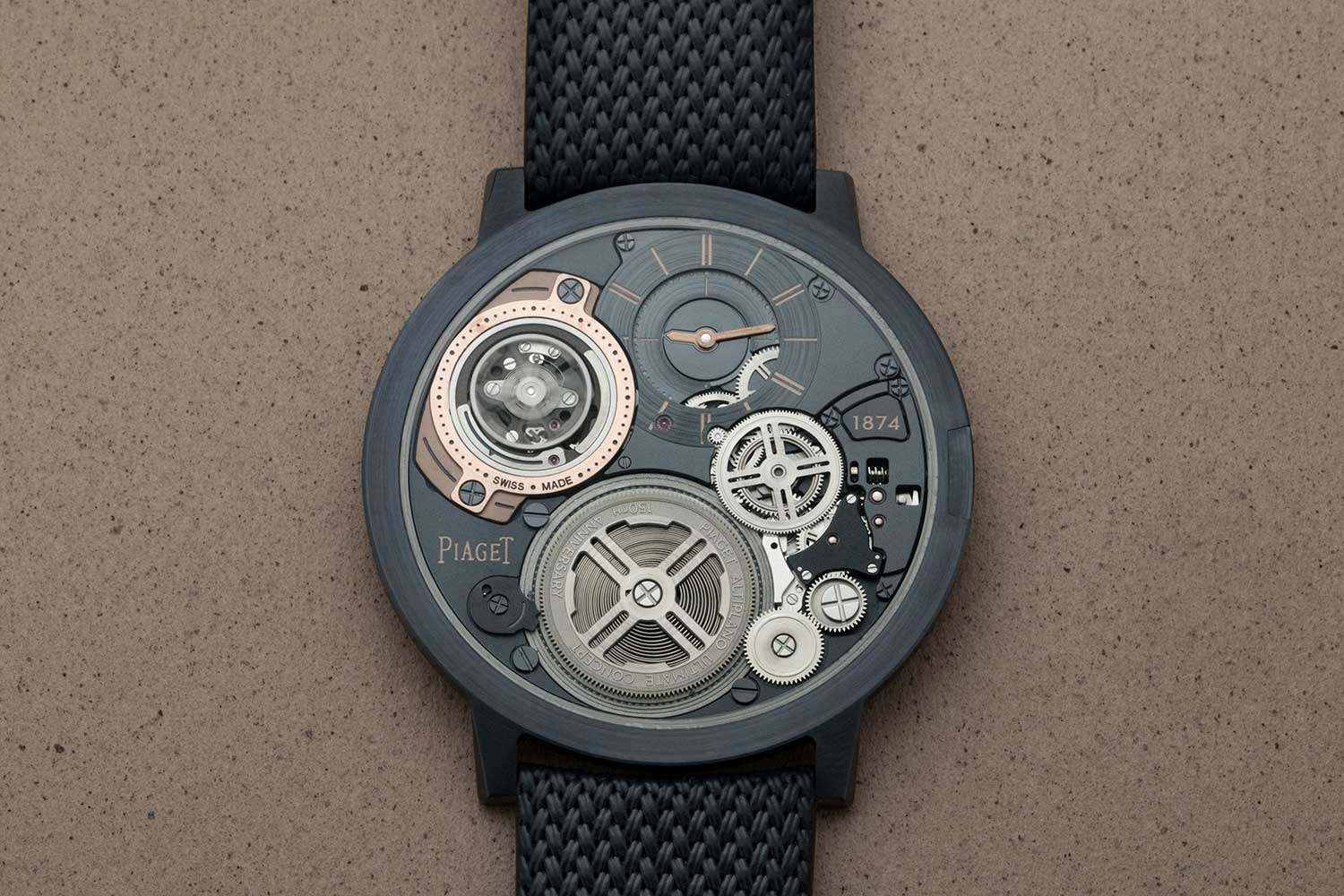
Piaget Altiplano Ultimate Concept Tourbillon (Image: Revolution)
While a peripheral drive is commonly employed in slim tourbillon movements, the AUC Tourbillon goes even further. The cage itself is fixed in a ceramic ball bearing, like the barrel, eliminating the need for a jeweled bearing. The balance is free sprung, with adjustable timing weights, and a flat hairspring. It is also supported on a ball bearing embedded into the cage. Normally, the outer end of the hairspring is attached to a stud holder, which is typically mounted on the balance cock. But the titanium plates serve as both the pallet fork bridge and stud holder with the hairspring sitting beneath the balance rather than above it.
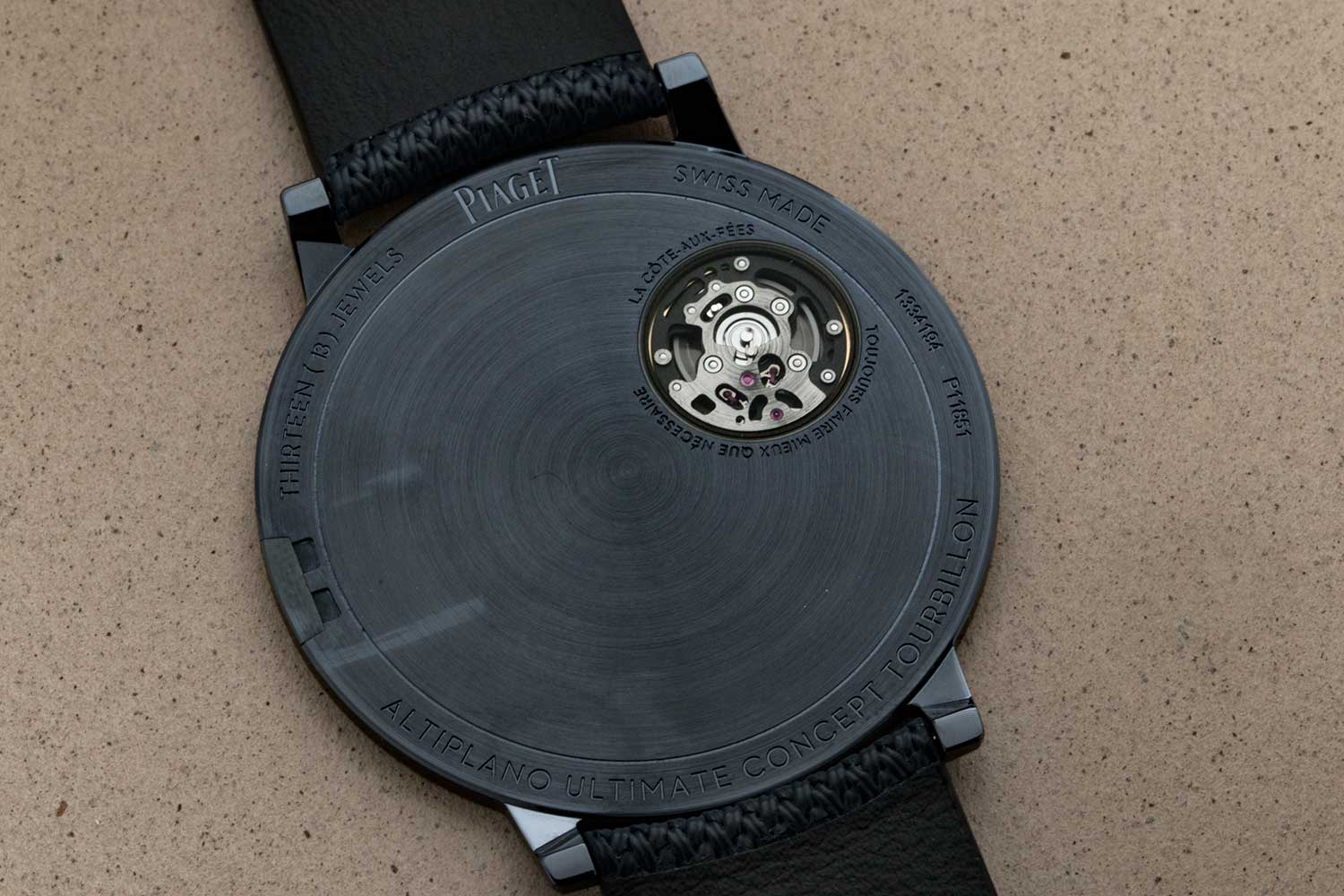
Piaget Altiplano Ultimate Concept Tourbillon (Image: Revolution)
Most notably, the balance wheel retains a frequency of 4Hz. All things equal, a higher beat rate naturally places greater demands on the movement construction and power management, but it is nonetheless key to rate stability in a wristwatch. Moreover, in such constrained environments, it arguably even more critical to ensure that components are optimized for performance. The escapement has a skeletonised form to reduce inertia. Notably, the banking pins are integrated into the titanium tourbillon cage where the lever banks directly against a notch shaped to receive it.
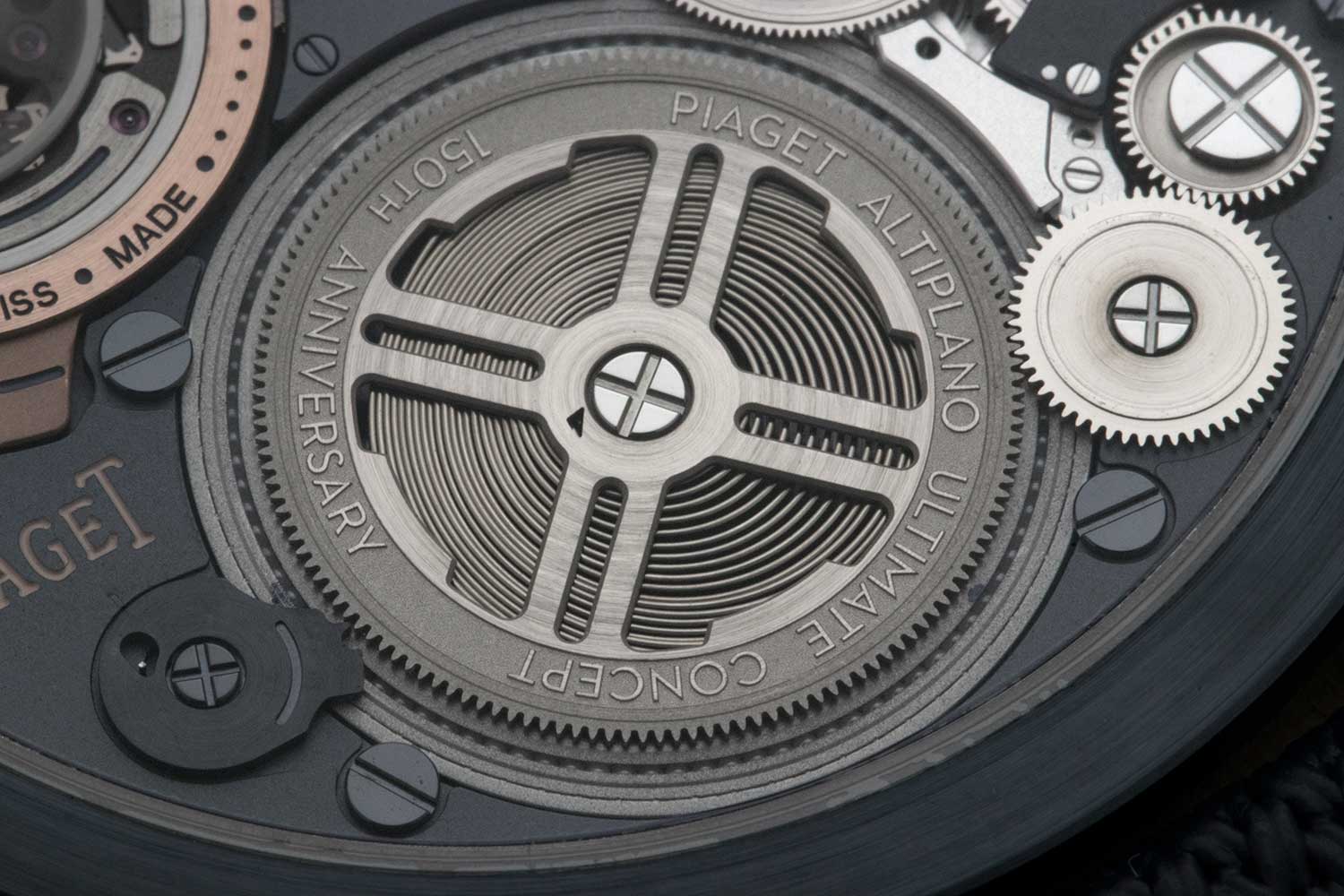
Piaget Altiplano Ultimate Concept Tourbillon (Image: Revolution)
Despite the constraints imposed by its ultra-thin design, certain components still undergo hand finishing and how they managed it is a wonder in itself as there is little surplus metal left to remove. Each spoked wheel undergoes hand polishing and chamfering.
All told, the AUC Tourbillon is an extraordinary accomplishment, and notably one that pushes the boundaries of slimness without sacrificing the beauty of classical watchmaking.
Movement: Caliber 970P-UC one minute peripheral tourbillon; manual winding; 40-hour power reserve
Functions: Hours, minutes, seconds
Case: 41.5 mm; 2mm height; M64BC cobalt alloy with blue PVD-treatment; water resistant to 20 m
Strap: Dark blue calfskin with 3D printed maille polonaise mesh motif and pin buckle in M64BC cobalt alloy













